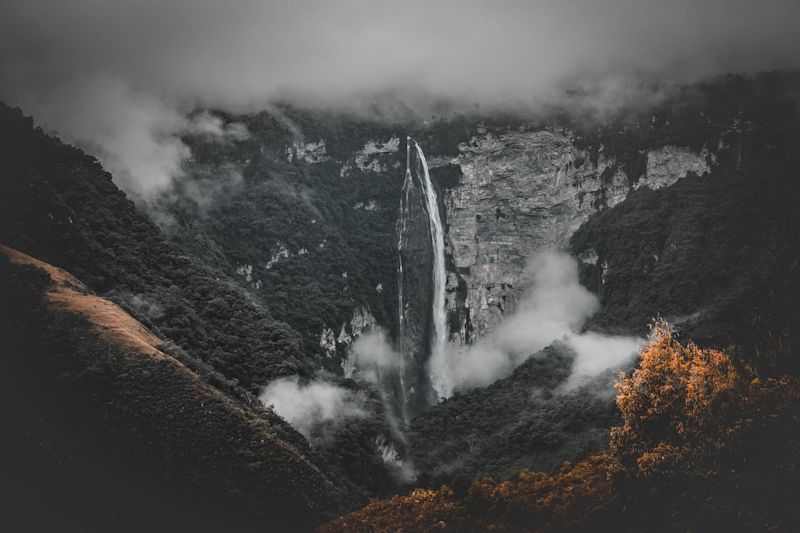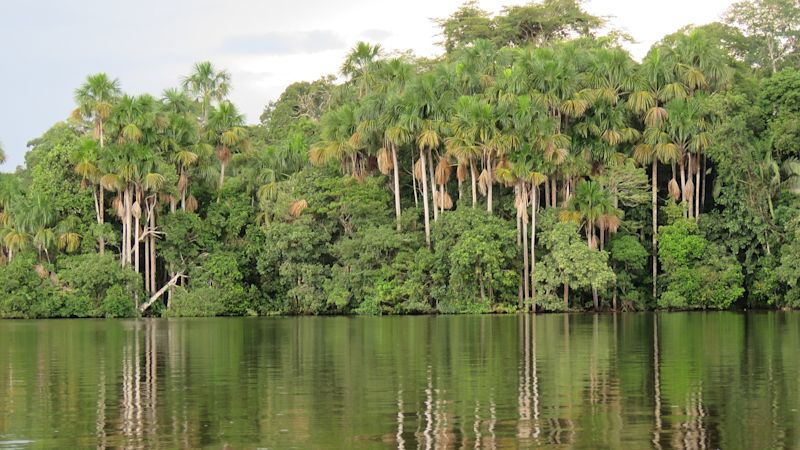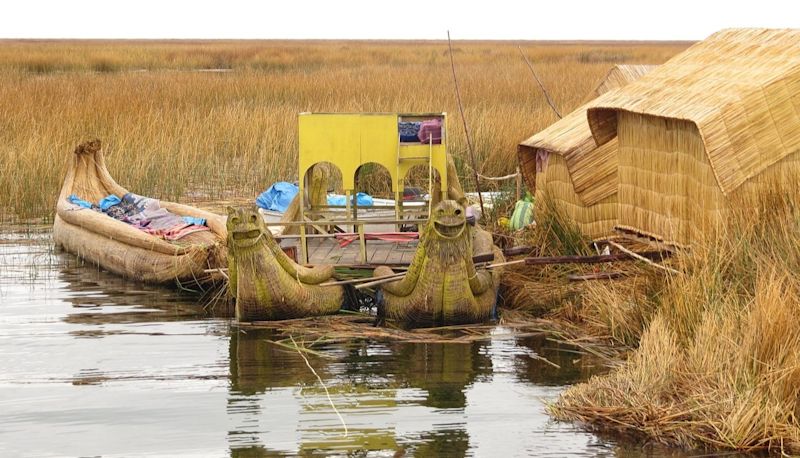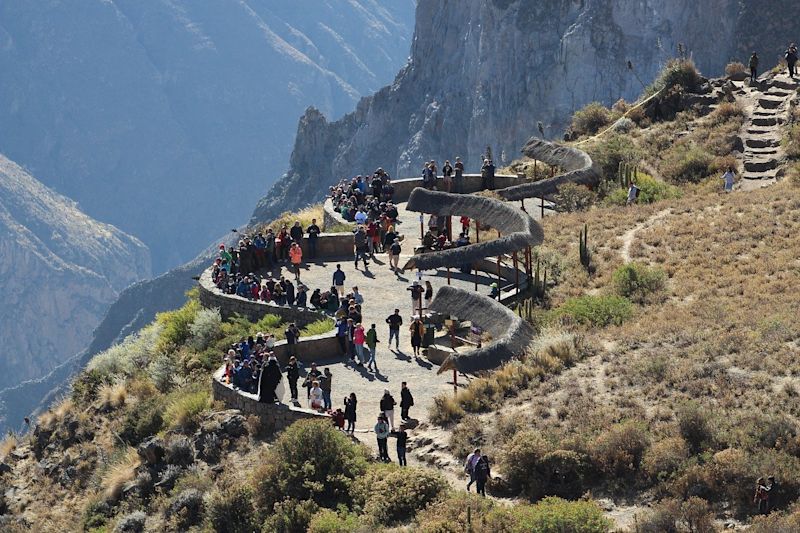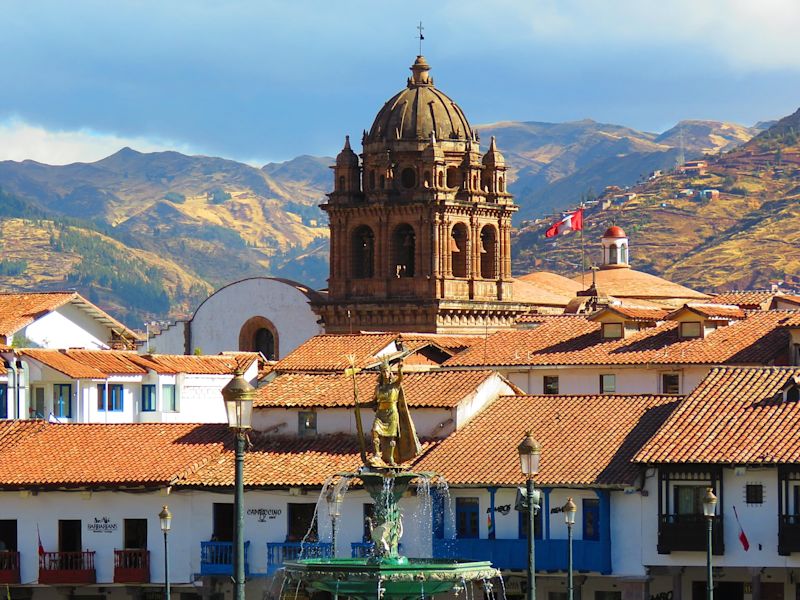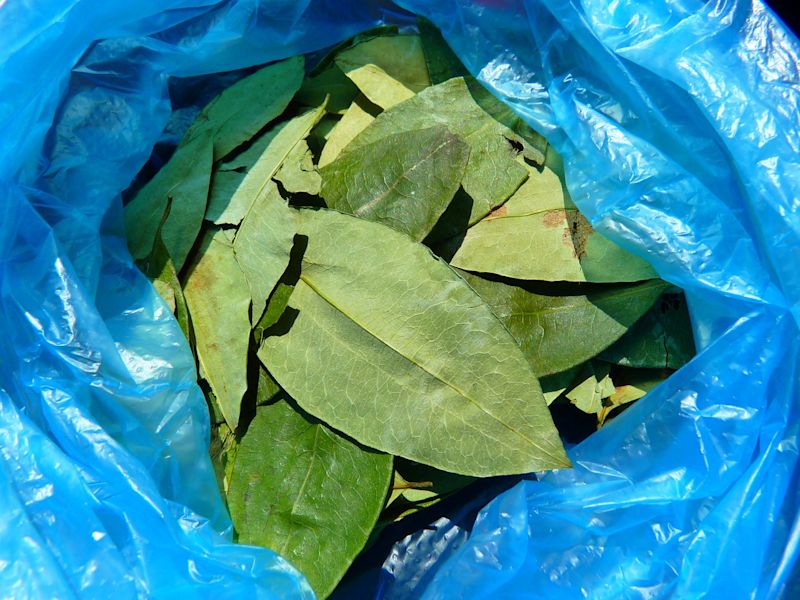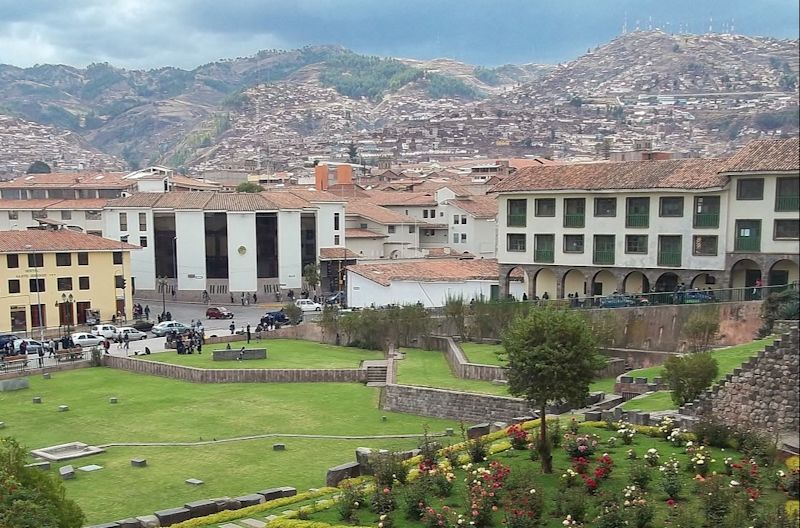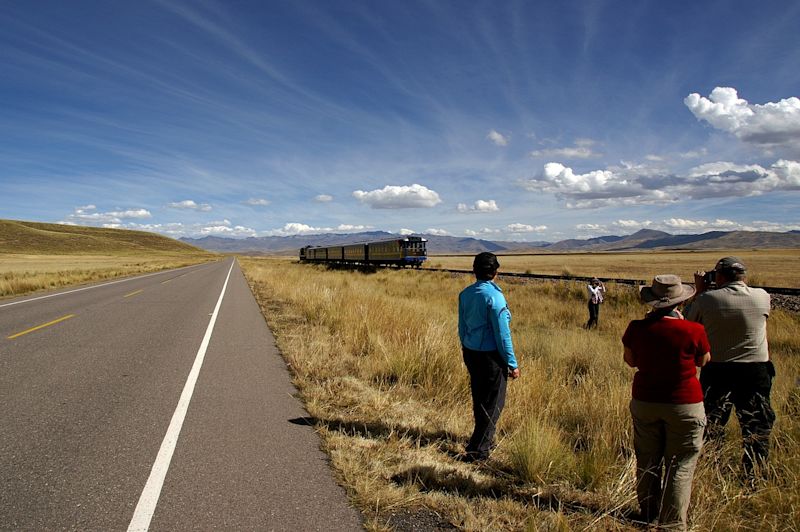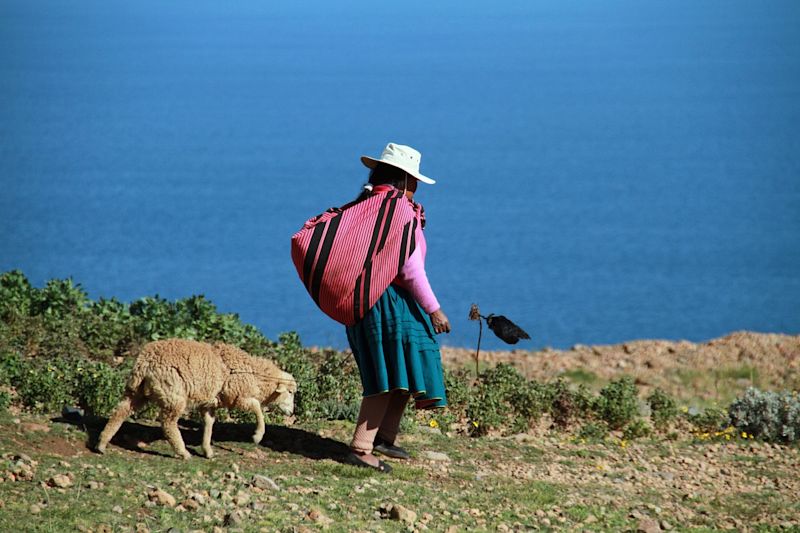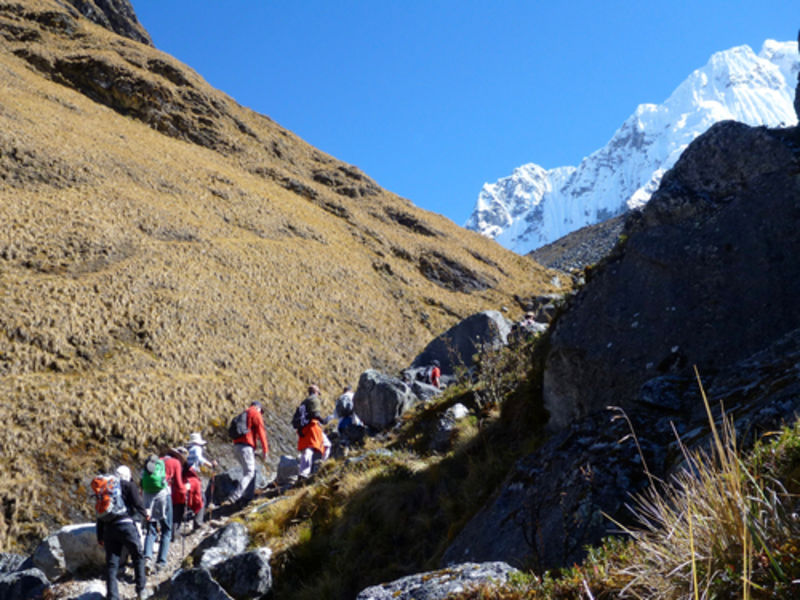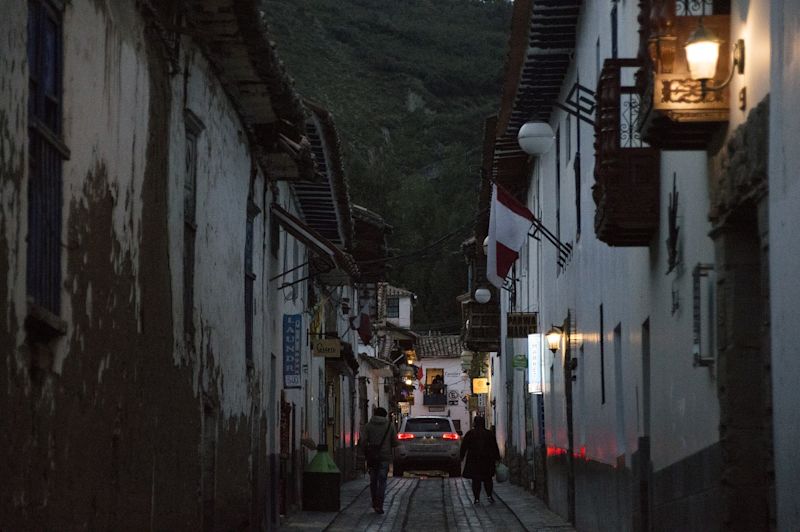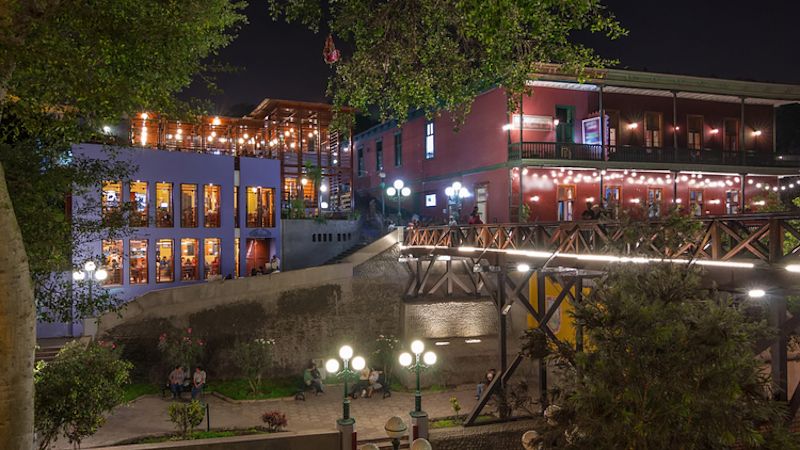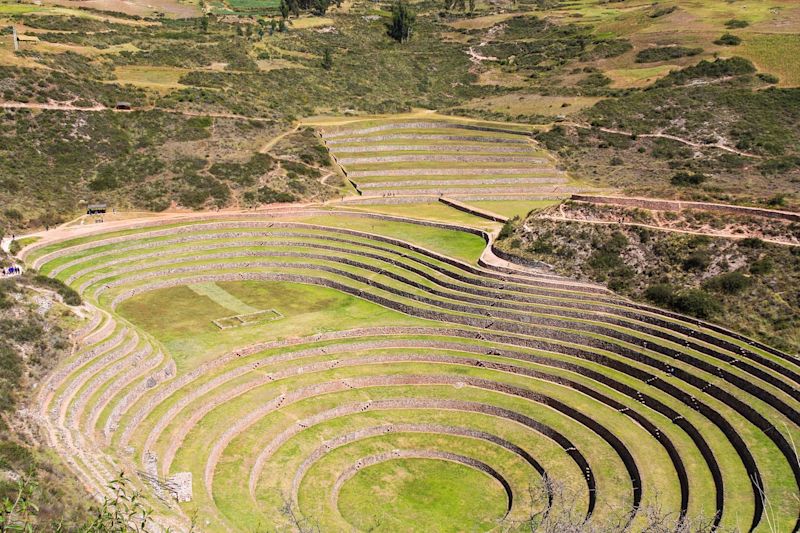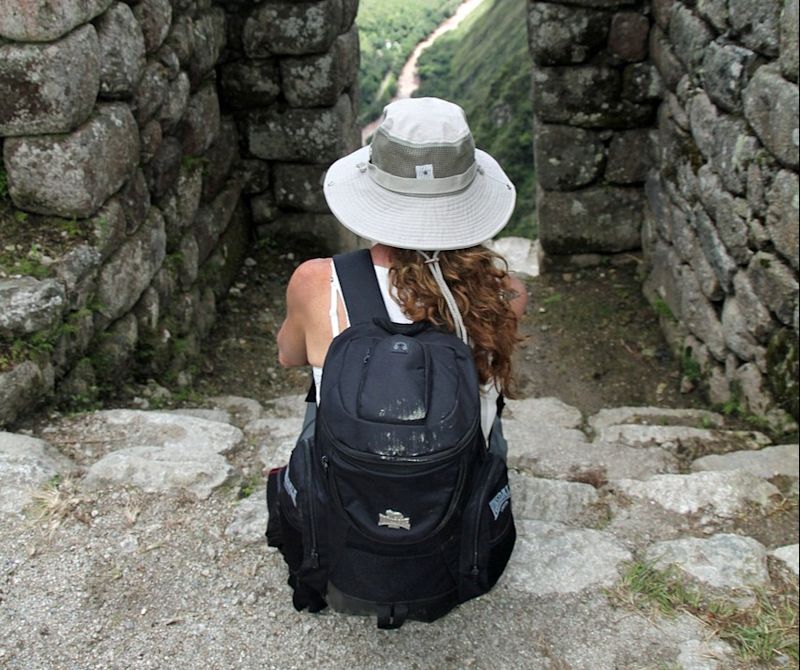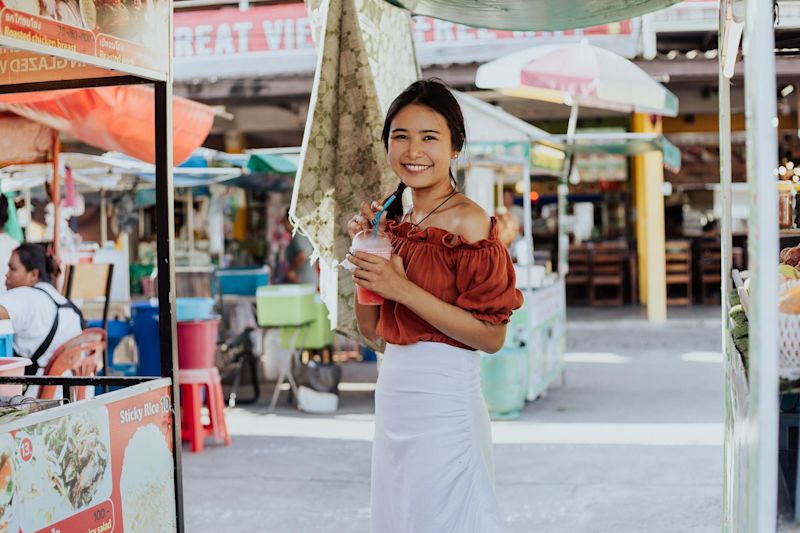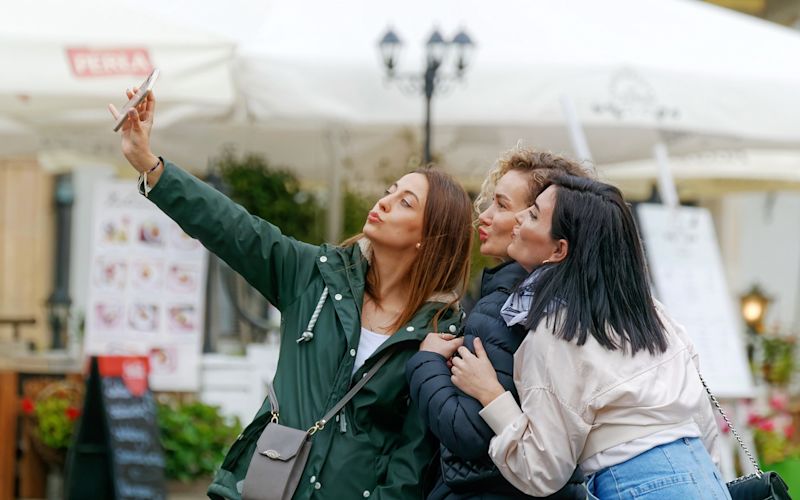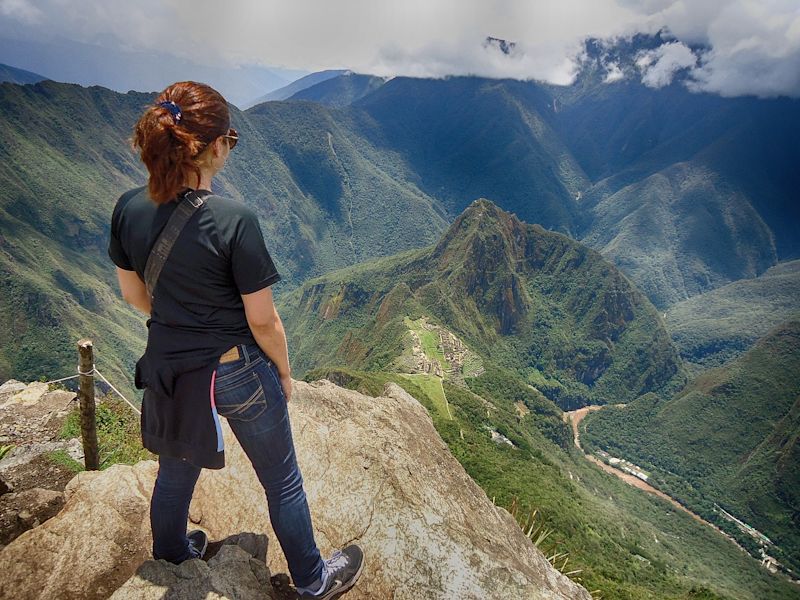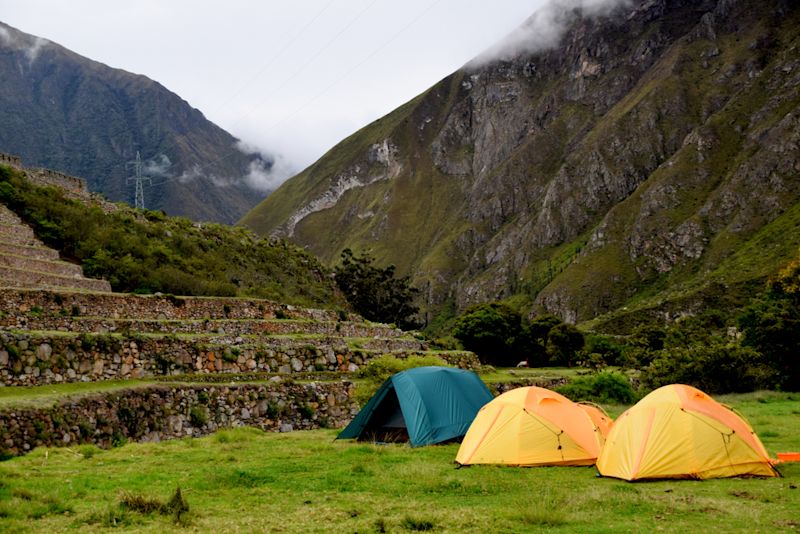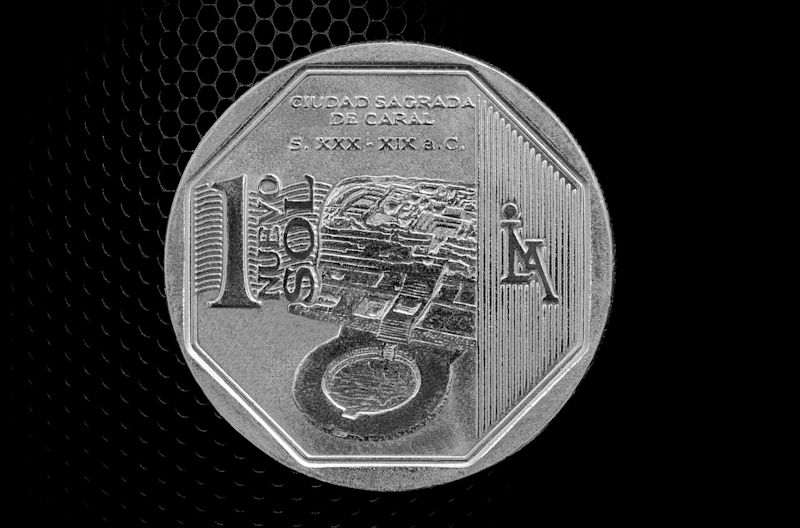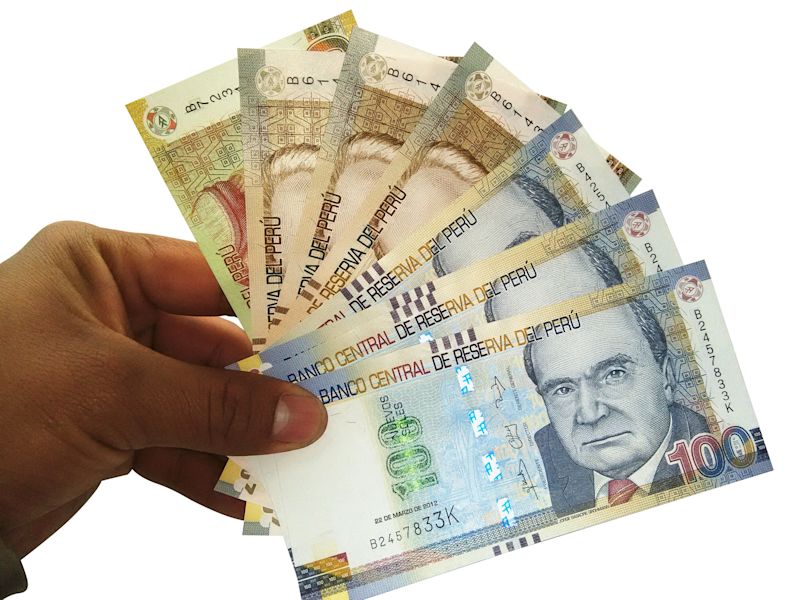Peru is ranked #101 on the 2022 Global Peace Index.
This placement is sobering but not alarming. Or at least we think so. And from our experience, Peru is absolutely safe enough to visit. It's just not quite so safe that you shouldn't take some strategic safety precautions and then remain vigilant while in the country.
If you read through this post and take our recommendations, we feel comfortable recommending that you head to Peru for that epic holiday that we know you'll love and experience without fuss!
Right, so here are eight ways to stay healthy and safe while travelling in Peru ...
1. Inoculations to consider before visiting Peru
It's best to ensure you've had the standard childhood inoculations before heading to Peru. These include tetanus, polio, diphtheria, TB, hepatitis A and typhoid.
You should also then consider where in Peru you're heading, and if there are any diseases there that might prompt you to take some preventative measures.
Given Peru's diversity of climates, you should research the health risks of specific places
If you head to the Amazon jungle of Peru or trek certain forested routes like the Vilcabamba or Choquequirao, please consider taking anti-malaria tablets. If you're uncertain whether or not the area you're visiting has a malaria problem, visit your government's health advisory website, or ask your tour operator if you're travelling with one.
Peru is one of the most climatically diverse places in the world, and rubs shoulders in this regard with FAR larger countries like the USA, China, Russia, India and Mexico.
Certain parts of Peru have malaria
You could also consider getting yellow fever and rabies jabs, especially if going on a long trek where it could be days before you can access a hospital.
Speaking of going on treks, please read Your complete packing list for trekking to Machu Picchu if you'd like our advice on what should go into a personal first aid kit for trekking in (or even just visiting) the Andes.
2. Take precautions against developing altitude sickness
If you're headed to the Andes or Lake Titicaca during your Peru visit, you're likely going to need to give yourself time to acclimatise (acclimate) to the higher altitude.
This is especially true for anyone who flies from coastal Lima to Cusco (3,400 m / 11,155 ft) or Puno (3,826 m / 12,549 ft), as both destinations mean you make a massive jump in altitude!
Lake Titicaca is the world's highest navigable lake
Remember that the higher in altitude you travel, the less oxygen you're able to take in per breath. This places your body under strain until it adjusts (which usually takes around 48 hours). Most people who are unused to the high altitude (but not all) develop minor altitude sickness symptoms, like a headache and maybe some dizziness or nausea. The symptoms usually abate after a couple of days.
You won't feel yucky from the altitude gain immediately. You can expect the effects of the altitude to kick in the day after arrival.
Severe altitude sickness, on the other hand, can be dangerous, even fatal. This is why you shouldn't go on a high-altitude trek like the Inca Trail too soon after making a big jump in elevation. You need to rest when adjusting to a big elevation jump.
That said, if you drive up to Cusco (or anywhere else high in the Andes) over a couple of days, you won't need to rest as long before starting to hike or trek in the mountains.
Don't underestimate the impact of the altitude on your body in the Andes
Take your acclimatisation seriously
Acclimatisation is about letting your body adjust slowly and gently to a big increase in altitude.
The best thing you can do when you make a leap in altitude is to allow yourself plenty of time to rest (and sleep too if necessary). Altitude affects us all differently, and fitness and youth don't shield you from it. Rather expect to have it affect you quite a bit, plan for that, and then be pleasantly relieved if you end up unscathed.
Cusco is far higher in elevation than even Machu Picchu
Mild altitude sickness symptoms include nausea, headaches, dizziness and insomnia. These usually go away within the space of a day or two. And you can use medications like painkillers to help you cope. Also note that you can get prescription altitude meds which help you to acclimatise better.
Locals chew coca leaves to help with the high altitude, and you could try that too while in Peru!
Locals chew coca leaves to combat the negative symptoms of high altitude
Finally, don't exercise hard, drink alcohol or smoke while acclimatising. Try to eat wholesome, plant-based foods, drink lots of water, and just take life easy. You can always indulge in that famous Peruvian cuisine when you're all sparkly-fresh again!
3. Look after your skin, lips and eyes at high altitude
If you're unused to being at high altitude, it can be easy to underestimate the intensity of the sun and how very drying the cold air is. This can hurt and even damage your eyes and skin, so you need to come prepared.
Your lips and skin
When you head to the Andes, your lips and skin can take a painful beating before you realise what's what. This is because the air is very dry and there's often a cold wind.
Sunburnt noses and cheeks are common among tourists in the Andes, as are cracked knuckles and lips.
No matter the time of year, Cusco is cold at night
To avoid becoming a tourist cliché, you want to:
- Wear full-spectrum* sunscreen and lip balm (don't forget the backs of your hands if bare).
- Wear a wide-brim hat and cover up as much as possible while still being comfortable.
- Bring a rich moisturiser for use at night.
- Carry an aftersun cream or salve (for just in case).
* Full-spectrum sunscreen protects you from both UVA and UVB, which is really important.
Remember that the higher the altitude, the more intense the UV rays.
A wide-brim hat is a great idea when at high altitude
Your eyes
Our eyes take extra strain at high elevation. If you're above the snow line, there's even the possibility on bright days of developing snow blindness (a painful but real condition!).
With this in mind, please bring comfortable sunglasses that are more in the vein of Jackie O. than a mad scientist. Even better, wear wrap-around sports glasses. You don't want the sun creeping in from the sides.
The glare off the water at Lake Titicaca can hurt your eyes
Also, note that polarised sunglasses are a great option as they reduce glare.
4. Take out comprehensive traveller's insurance
If something goes wrong on your travels in Peru, you naturally want to have comprehensive traveller's insurance to ensure all of your needs can be met.
When taking out traveller's insurance, we suggest choosing one that offers cover for all of the following (which is what we do personally when travelling):
- Delayed, cancelled or interrupted travel
- Medical insurance
- Lost or damaged luggage
Delayed, cancelled or interrupted travel
Delayed travel covers things outside of your control like a traffic jam preventing you from reaching the airport on time, a mechanical issue with your plane, or severe weather preventing the plane from reaching its destination. It also covers missed connections that are outside of your control.
Traveller's insurance covers you for delayed and cancelled flights
Trip cancellation covers having to abort your trip beforehand for reasons such as injury, illness, severe weather, or a natural disaster or terrorist attack at your destination.
Trip interruption covers the costs involved when you have to abort your trip post departure, for any of the same reasons listed for trip cancellation above.
Both trip cancellation and trip interruption should also cover having to cancel or abort a trip as a consequence of illness or injury of a travel companion or family member.
Medical insurance
Regular medical aids don’t cover medical expenses incurred outside of your own country. This is why medical insurance is a critical component of any traveller’s insurance.
Proper medical insurance covers medical emergencies as well as medical evacuation. This means that should you fall ill or be injured, your insurance will pay for all hospitalisation and doctor fees as well as all transportation to and from the hospital (including ambulance services) and to then get you back home.
We recommend that you cover yourself to the tune of at least US$200,000 for medical insurance.
Cover for lost or damaged luggage
The cover for lost or damaged luggage is important. If you're heading to trek in the Andes, you can't do this without the proper gear!
There are shops in many cities and towns (like Cusco and Ollantaytambo) that offer all of the varied trekking equipment you might need, so should your luggage go missing you could use the insurance money to gather together what’s needed and still continue on with your trip. Also, if you're travelling with a tour operator, they are likely to have some equipment you can rent.
We recommend wearing or carrying important items like trekking boots when flying
That said, one of our top travel tips is to travel with essentials like your hiking boots and your expensive winter jacket on you. Replacing lost undies and thermals is far less of an issue than breaking in new boots while doing the trek of your life.
Note: while many credit cards offer free, automatic traveller's insurance when you book your flights with them, the cover usually isn’t comprehensive enough on its own. That said, it's a useful extra!
Buy special insurance when going high-altitude trekking
It's vitally important that you cover yourself for "hiking up to 6,000 m" if you do the Inca Trail or any other major hike or trek in the Andes.
On the Salkantay Trek you climb as high as 4,600 m
Traveller’s insurance is a must for anyone undertaking to trek to Machu Picchu. No reputable tour operator will take you on the trek without it.
We can recommend World Nomads as a reputable travel insurance company you might like to research. They offer coverage for more than 150 adventure activities, including high-altitude trekking.
5. Avoid certain areas and travelling by yourself after dark
Muggings do take place in some parts of Peru, particularly within certain sections of cities.
Avoid quiet alleys, especially at night
Here are the places it's best to be wary of visiting alone or after dark:
- Quiet streets and alleys in cities and big towns. Rather use a taxi if travelling at night. You can also use e-hailing services, but the drivers aren't always as strictly screened as some of us might like.
- Remote or quiet tourist sites (like the Inca ruins you can hike to on the outskirts of Cusco). Criminals know where tourists like to go. So it's best to visit such sites during the busy hours of the day if you're on your own, or go in a group – preferably one led by a local tour guide.
- Quiet or isolated bus depots and train stations. Rather don't hang around such areas on your own.
Note that even if there are two or three of you, you could still be vulnerable, so try to mitigate the dangers by avoiding quiet areas, especially after dark. If you're unsure of the safety of a particular place or route, ask your accommodation host or someone similar to give you specific advice.
Stick to busy areas when out and about in Lima at night
As you're well aware, criminals are less likely to target you if you're part of a group. It's solo travellers who are easy prey. If you do have to travel on your own in Peru, please remain extra vigilant.
The good news is that local communities are often protective of solo travellers, especially women, and will rally around anyone they see being harassed or mistreated. But they won't, of course, be able to protect you from all possible crimes, so the onus remains on your to be aware of common issues and stay alert.
Tourist hotspots can also be criminal hotspots
As is pretty much always the case anywhere in the world, you're safest when you move around in the company of a registered local tour guide.
6. Be vigilant against thieves and pickpockets
The most common issue troubling tourists in Peru is pickpocketing and opportunist thefts.
With this in mind, please consider carefully how to keep your valuables, passport and money safe. Here are some specific pieces of advice for each ...
Your money, bankcards and passport
Firstly, we recommend that you photograph or photocopy your passport, bankcards, travel documents and even driver's licence before leaving home for Peru. Share these with a loved one and also put them onto a virtual drive.
That done, here are our top tips for looking after your money, bankcards and passport once in Peru:
- Upon arrival in Lima, register your passport at your embassy. This may seem like a hassle, but it will save you from a far worse hassle should your passport become lost or stolen during your stay.
- Leave what you can in a safety deposit box at your accommodation before heading out for the day.
- Put what you need for the day in a money belt or lanyard pouch that you can keep hidden under your shirt.
- If you're going to use a backpack, store your most important items at the bottom of the main compartment (talented pickpockets can unzip a pouch and slip in a hand without you noticing). Also, consider wearing the backpack on your front where you can see it.
- Don't carry a backpack with flimsy straps that can easily break or be cut. And wear both straps of your backpack to make it harder to snatch (it's better for your back too!).
It's a good idea to always use both backpack straps
Finally, be aware that thieves often operate in gangs. One will distract you while another uses a razor to cut through your backpack or simply grab it and run.
The places to be especially alert are:
- Crowded plazas
- Markets
- Railway stations
- Bus depots
Markets in particular often see you pulling money out and being distracted by your interaction with the vendor. So remain vigilant when browsing and shopping.
When possible, leave your passport and bank cards in a hotel safe and only carry the cash you need for the day in a concealed place close to your body.
Markets are a favourite haunt of pickpockets
Your camera and phone
Here are our top tips for camera equipment and cellphones:
- Think twice before carrying large and expensive camera equipment in certain areas.
- Keep your camera or phone tucked away when you're not using it.
- Consider having a reinforced camera strap for when you do have it out, and ensure it's looped over your neck so that the camera can't be easily snatched out of your hand.
- Don't ask strangers to take photos of you using your camera or phone.
- Don't use a selfie stick in crowded areas as this makes your phone easier to swipe.
Consider if the environment is safe before using a selfie stick
Dress down
It's a good idea to not dress in your fanciest or most branded clothing. And think twice before wearing expensive jewellery.
While crowded areas might feel safe in terms of numbers, they also make it easier for thieves to create distractions and then snatch and disappear with your goods.
Top tip: dress casually so that you don't look like a walking ATM.
Fortunately, there's really no reason to dress smartly for most tourist sites in Peru
Contact the Tourism Police if anything goes wrong in a city
The Tourism Police (Policía de Turismo, or POLTUR) is a specialised unit within the national police force that's dedicated to assisting and ensuring the safety of tourists in cities. You can go to POLTUR for any issues you might face as a tourist, such as a lost or stolen passport, or even if you've been ripped off or scammed.
Linked to this, be wary if you are approached by a policeman. Always insist on seeing identification, and don't hand over your passport. Insist on going to a police station on your own and dealing with them there if it's necessary.
Precautions to take on treks
While thieves are less of a problem in remote places like along the Inca Trail, opportunist thefts can still take place.
With this in mind, please don't leave valuables like cameras and your passport in your tent or hut.
In fact, you should always keep your passport on your person because (as we discuss in What to know about Peru's visa requirements and entry procedures) you can be asked at any time by an official to show your passport, and failure to present it will result in a fine.
Don't leave valuables in your tent when you're not there
7. Be alert to these four money-related crimes
One of the most prevalent issues tourists face in Peru is money-related crimes. But with a little foreknowledge, you can be prepared and protect yourself.
Peru's currency is the nuevo sole, often shortened to sole. The plural is soles.
A 1 sole coin
Credit card fraud
Credit card fraud is a big problem in Peru, so consider yourself forewarned.
Always keep you card in sight when making payments, and don't hand it over if you can help it. A shop assistant that's taking long to hand back your card and receipt could be skimming your card.
Also, keep an eye on your bank account for suspicious activity while travelling in Peru and also for a few weeks after you arrive home.
ATM theft
Ideally you should only use an ATM inside of a bank. Most have at least one.
Alternatively, opt for ATMs inside of shops or malls. Only use a plaza or street ATM when you have someone else standing watch for you.
Also, don't withdraw a large wad of cash in front of strangers, as you could then be followed and targeted at a more opportune site.
Finally, never use an ATM that looks like it's been tampered with in any way, such as having a false front stuck on it.
Counterfeit banknotes
Counterfeit banknotes and coins are common in Peru. So check the soles (or US dollars) handed to you.
There are half a dozen ways to detect a fake Peruvian banknote, but here are the ones you can easily do when receiving banknotes:
- Look for the face watermark in the blank area of the note.
- Check for the security stripe which runs from top to bottom, slightly offset from the centre.
- Check that optically variable ink (ink that changes colours when viewed from different angles) has been used for the denomination (number) printed in large in the bottom right corner on the frontside of the note.
Check the banknotes you're given aren't counterfeits
Please don't be tempted to do money exchanges in the street. You're too vulnerable to being robbed, receiving counterfeit notes, or being shortchanged through sleight of hand.
As mentioned earlier on, please contact the Tourism Police if you fall victim to any sort of money-related crime.
Express kidnappings
An express kidnapping is when a gang of thieves kidnaps a tourist and takes them around to the city's different ATMs, forcing them to withdraw as much money as possible. It's crazy that there's a term for this, but there you have it.
With this in mind, here are some tips to consider to stay safe:
- Only carry one bankcard on your person at a time.
- Have separate accounts linked to different cards so that your money isn't all sitting in one place.
- Try not to have too much money in any of the accounts you'll be accessing on the trip.
Finally, travelling with a local tour guide is a great way to ensure you (and your money) stay safe. (It also has other benefits, such as providing jobs, like we discuss in 12 reasons why good tour guides are so important.)
Tour guides not only look after your person – they also pay for most things for you, having received the funds through your prepaid tour package fee. In this way you don't need to carry so much money on you and can also leave your bankcards secreted away in a nicely dark and inaccessible little safety box!
8. Don't transport or use cannabis or other drugs
Being in possession of cannabis, cocaine or other drugs is a very serious offence in Peru. So don't bring any drugs into the country, even those bought legally at home or used for medicinal purposes.
Note that there's no bail for serious offences and you could spend quite some time in gaol (jail) before being brought to trial.
Carrying even legally purchased cannabis can land you in trouble in Peru
That's all, people!
Keen to chat about your Peru dreams or plans? We're happy to help, so just drop us a line and let's get talking. 😊


